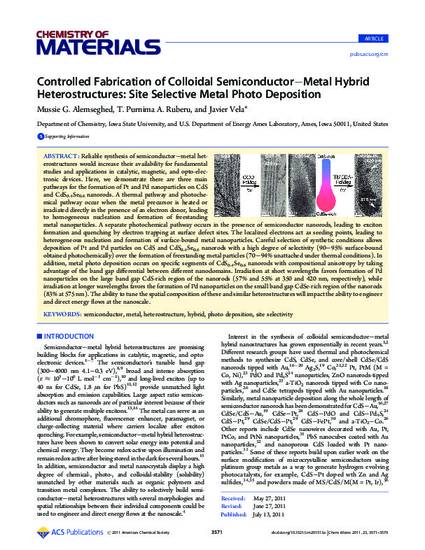
Reliable synthesis of semiconductor-metal heterostructures would increase their availability for fundamental studies and applications in catalytic, magnetic, and opto-electronic devices. Here, we demonstrate there are three main pathways for the formation of Pt and Pd nanoparticles on CdS and CdS04Se0.6 nanorods. A thermal pathway and photochemical pathway occur when the metal precursor is heated or irradiated directly in the presence of an electron donor, leading to homogeneous nucleation and formation of freestanding metal nanoparticles. A separate photochemical pathway occurs in the presence of semiconductor nanorods, leading to exciton formation and quenching by electron trapping at surface defect sites. The localized electrons act as seeding points, leading to heterogeneous nucleation and formation of surface-bound metal nanoparticles. Careful selection of synthetic conditions allows deposition of Pt and Pd particles on CdS and CdS0.4Se0.6 nanorods with a high degree of selectivity (90-95% surface-bound obtained photochemically) over the formation of freestanding metal particles (70-94% unattached under thermal conditions). In addition, metal photo deposition occurs on specific segments of CdS0.4Se0.6 nanorods with compositional anisotropy by taking advantage of the band gap differential between different nanodomains. Irradiation at short wavelengths favors formation of Pd nanoparticles on the large band gap CdS-rich region of the nanorods (57% and 55% at 350 and 420 nm, respectively), while irradiation at longer wavelengths favors the formation of Pd nanoparticles on the small band gap CdSe-rich region of the nanorods (83% at 575 nm). The ability to tune the spatial composition of these and similar heterostructures will impact the ability to engineer and direct energy flows at the nanoscale.
Available at: http://works.bepress.com/javier_vela-becerra/6/

Reprinted (adapted) with permission from Chemistry of Materials 23 (2011): 3571, doi: 10.1021/cm201513a. Copyright 2011 American Chemical Society.